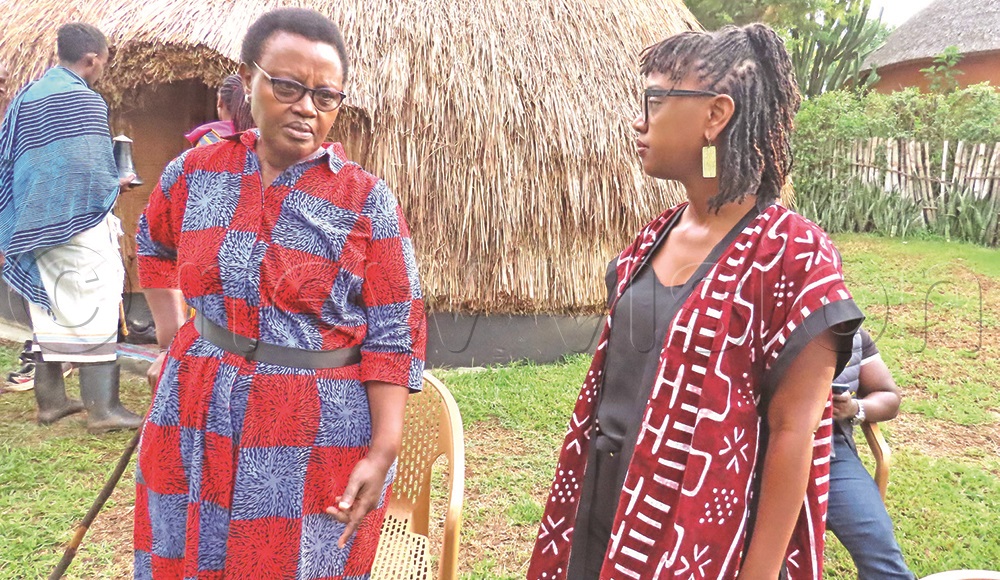Tucked into the rolling hills and acacia-strewn savannas of southwestern Uganda lies Nshenyi Cultural Village, a place where time is holding its breath.
Located in the heart of Ntungamo district, this land has long sustained the Banyankole people, whose lives have for generations revolved around cattle rearing and crop subsistence farming.
Nshenyi is more than just a village — it is a living and breathing museum. Here, tradition holds firm in the face of a rapidly changing world.
A local community member has chosen to champion preservation over profit, embracing ancestral farming methods, nurturing indigenous cattle breeds, and cultivating native crops.
Life follows ancient rhythms, rooted in a spirit of ubuntu — the belief in a shared humanity and responsibility. For visitors, Nshenyi offers more than a window into the past, it provides an immersive journey into a way of life that honours the land and its gifts.
Each day begins with the lowing of cattle and the melodic songs of herders. Guided nature walks lead guests along time-worn paths, tree-planting ceremonies reconnect visitors with the soil, and traditional homesteads open their doors to the warmth and wisdom of Ankole ancestry.
A highlight for many is reaching the tri-border point where Uganda, Rwanda, and Tanzania meet — a symbolic crossroads that reflects the deep interconnectedness between people and place. Cattle are the heartbeat of this world.
Owning 100 or more earns one not just respect, but societal stature.
“Cattle are not just wealth — they are life,” says Moses Siyabyona, the general manager of Nshenyi Cultural Village.
“They give us milk, ghee, meat, hides, even dung and urine — all of which are useful. It’s said that milk flows on the paths of Ankole.”
This isn’t merely a saying. In 2021, the Uganda National Bureau of Statistics recorded over 1.8 million head of cattle in the Ankole sub-region — a substantial share of the national herd.
Each day in Nshenyi witnesses milking, watering and routine inspections of cattle — these rituals link today’s people to their ancestors.
Traditional herbal remedies are used in place of modern veterinary drugs, and branding practices remain deeply symbolic.
Children learn by observing, their education woven into daily chores and cultural songs. A young boy milks a cow beside its calf, softly singing: “Oyonkye kuteleke kakyerebambe…” His eyes gleam with wonder.
“These calves always find their mothers in a crowd. Nature never ceases to amaze me. And the mothers know the moo of their calf,” he says.
He retells, with a hint of shyness, the Ankole tradition where young women, before marriage, are secluded and fed milk for three months.
On the day of their engagement — the okuhingira — they emerge glowing, nurtured in body and spirit. More than just livestock, the Ankole longhorn is a regal emblem of heritage.
Its majestic horns and elegant frame exude dignity and identity. Rich in fat, its milk is prized for making ghee and cheese of superior quality.
“Ankole cow milk is unmatched,” says Mary Mugyenyi, the visionary founder of Nshenyi Cultural Village.
“It’s not just about how much they give — it’s about what they give. Quality, resilience, and tradition. These animals are our pride.”
Jane Natukunda received a cow at birth, a traditional gift in Ankole culture. Orphaned later in life, she relied on this cow and its offspring to fund her education and sustain herself.
“Cattle are our insurance,” Natukunda says.

“Without my cow and the support of my guardians, I don’t know how I would have survived. Whenever I am financially challenged, I sell one — the Piggy Bank has turned out to be life support.”
Survival under threat
Yet the survival of the Ankole cow is under threat. Crossbreeding, spurred by the promise of higher yields, is eroding the purity of this native breed.
Mugyenyi laments the slow realisation of their value. In the US, a pair of Ankole horns can sell for $1,000 (sh3.7m).
In South Africa, President Cyril Ramaphosa has elevated them to luxury status. Kenya and the US are following suit.
What makes these cows so treasured is their genetic purity. Untouched by foreign breeds, they embody a resilience uniquely adapted to the harsh conditions of the region.
Charles Aben, from the National Agricultural Research Organisation, notes that while an Ankole cow produces only about five litres of milk a day, it is nutrient-dense, the animal requires less maintenance, besides thriving where other breeds wither.
Even their yoghurt is richer and more flavourful. But cattle are only part of Nshenyi’s story. The village hums with life in other forms, too.
The principle of ubuntu echoes in the community gardens, in hands that till the soil, and in the honey harvested with care and reverence.
Tourism potential
Among the many visitors who have fallen under Nshenyi’s spell is Geofrey Baluku, a tourism enthusiast.
“Children born in urban centres can have a glimpse of their roots here,” he says.
His words echo the sentiments of many others who treasure the peace in this crop and livestock agriculture oasis. This is the quiet rhythm of Nshenyi.
It does not shout. It does not rush. But it speaks in the language of legacy, resilience, and pride. Here, life is lived not apart from the land but as part of it.
In a world speeding toward modernity, it offers another way — one rooted in sustainability, patience, and reverence for heritage.
And so the story of Nshenyi is told — in the clinking of cowbells, the rustling of trees, and the soft hum of bees. It is a story of a people who remember, who protect, and who believe that the past can still light the path to the future.
Beekeeping
Nshenyi is home to over 400 beehives, and the honey produced here, certified organic by the Uganda National Bureau of Standards — is sold in supermarkets, branded and bottled by a cooperative of 80 farmers.
Honey harvesting is an act of tradition and reverence. Beekeepers wait patiently for certain trees to bloom.
They approach the hives gently, calming the bees with smoke and using feathered brushes to clear the combs.
They cut honey-laden wax with precision, always leaving enough to keep the hive thriving. The layout of traditional long hives — brood in front, honey at the back guides this delicate process.
The hum of the bees is not taken for granted. It is a sacred sound that reminds all of the fragile harmony between nature and mankind.





